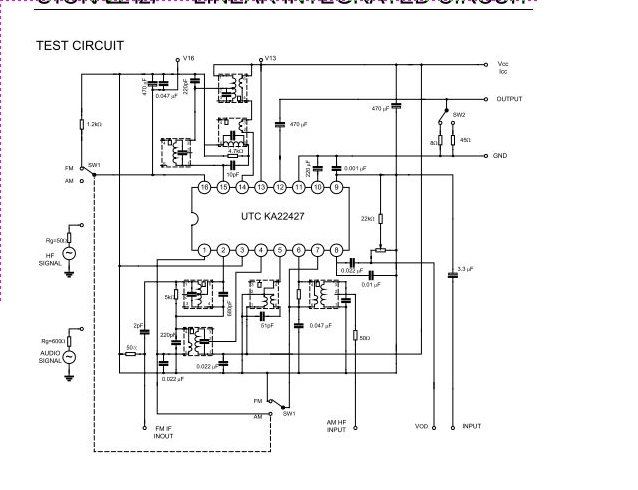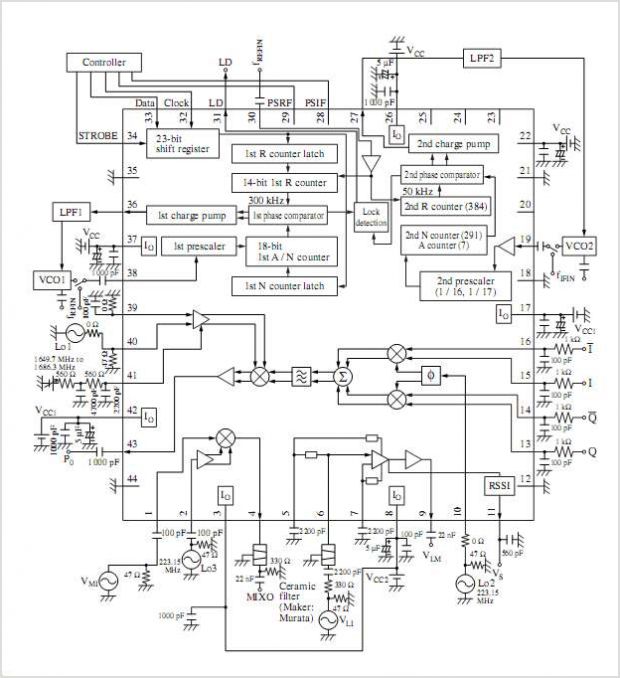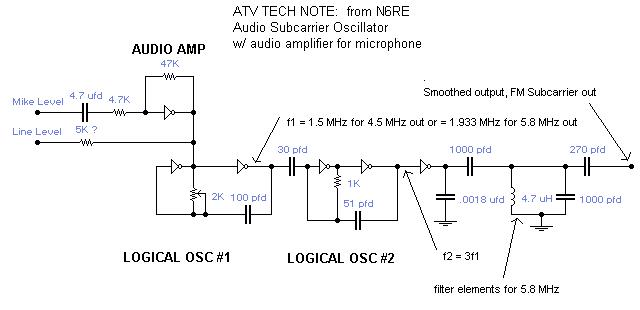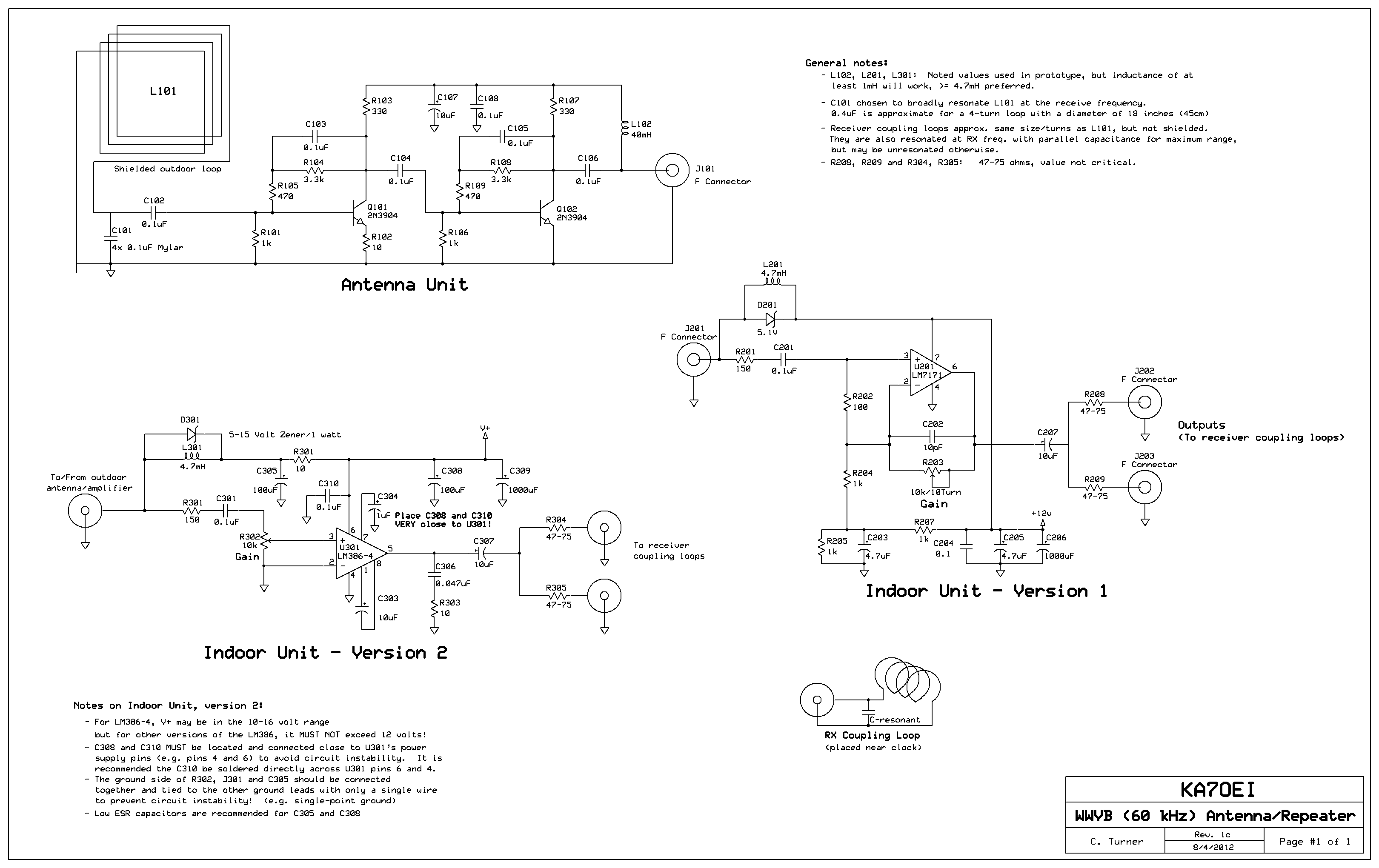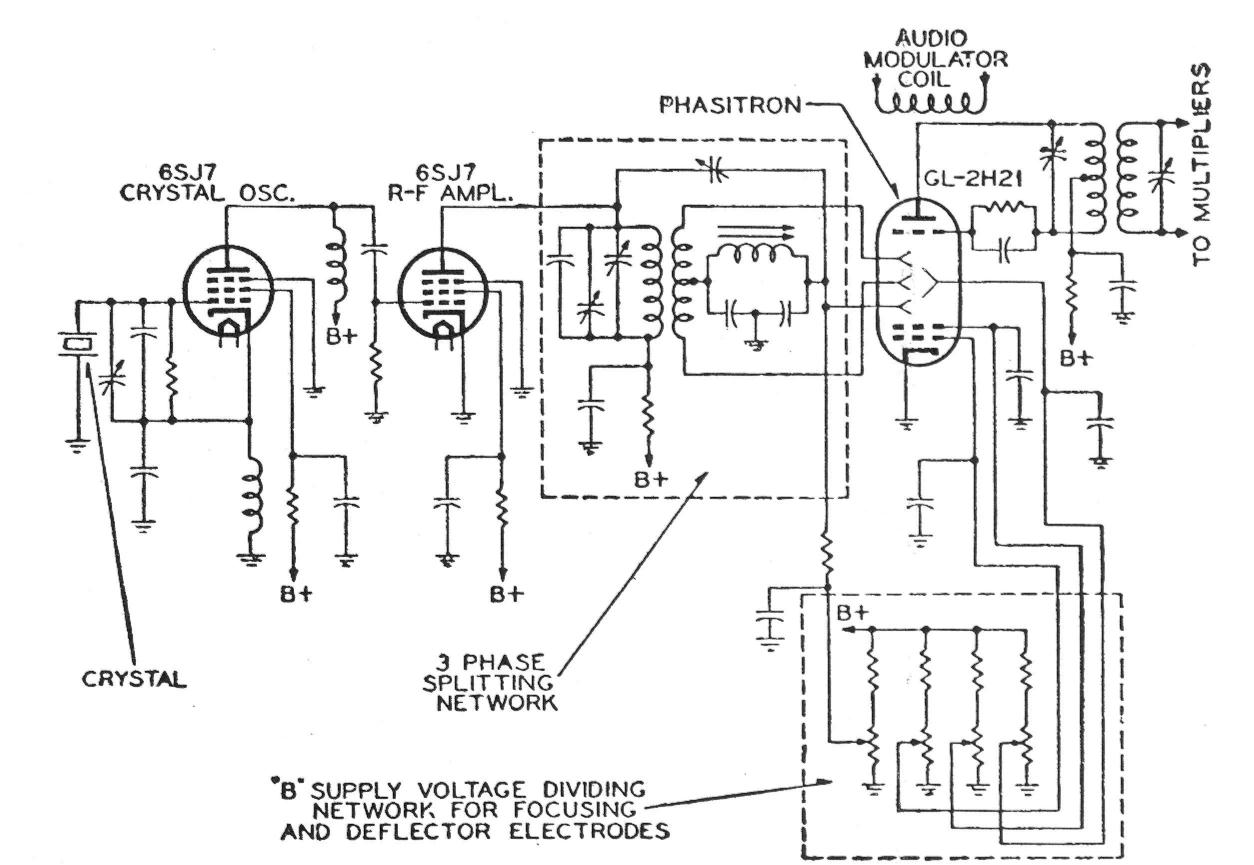
Rf Upconverter For Tvro Subcarrier Reception
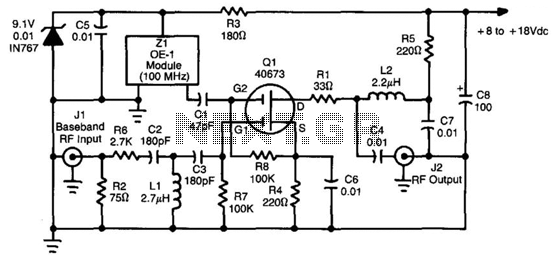
This converter utilizes a 40673 MOSFET to heterodyne the 5.5 to 8 MHz TVRO subcarriers to the FM broadcast band, enabling the use of a stereo receiver for high-fidelity stereo reception of TV sound subcarriers. Z1 is a prepackaged 100 MHz oscillator module.
The described converter circuit is designed to facilitate the conversion of specific TVRO (Television Receive-Only) subcarrier frequencies, ranging from 5.5 MHz to 8 MHz, into the FM broadcast band. This conversion allows for the reception of audio signals from television broadcasts using standard stereo receivers, thereby enhancing the quality of sound reproduction.
At the heart of the circuit is the 40673 MOSFET, which serves as the primary active component for the heterodyning process. The MOSFET operates efficiently at high frequencies, making it suitable for this application. The heterodyne technique involves mixing the incoming subcarrier signals with a local oscillator signal to produce new frequencies. In this case, the desired output frequency falls within the FM band, which typically ranges from 88 MHz to 108 MHz.
The Z1 component, a prepackaged 100 MHz oscillator module, generates a stable local oscillator signal. This oscillator is critical for the heterodyning process, as it ensures that the subcarrier frequencies are shifted appropriately into the FM band. The design of the oscillator module must take into account factors such as frequency stability, output power, and phase noise to ensure high-quality performance.
Additional components in the circuit may include filters to eliminate unwanted harmonics and noise, as well as amplifiers to boost the signal strength for optimal reception. Proper impedance matching is also essential to minimize signal loss and maximize the efficiency of the conversion process.
Overall, this converter design effectively bridges the gap between television audio subcarriers and FM stereo receivers, providing users with an enhanced listening experience while utilizing existing audio equipment. The integration of the 40673 MOSFET and the 100 MHz oscillator module exemplifies a practical approach to achieving high-fidelity audio reception from television broadcasts. This converter uses a 40673 MOSFET to heterodyne the 5.5- to 8-MHz TVRO subcarriers to the FM broadcast band, where a stereo receiver can be used for high-fidelity stereo reception of TV sound subcarriers. Z1 is a prepackaged 100-MHz oscillator module. 🔗 External reference
The described converter circuit is designed to facilitate the conversion of specific TVRO (Television Receive-Only) subcarrier frequencies, ranging from 5.5 MHz to 8 MHz, into the FM broadcast band. This conversion allows for the reception of audio signals from television broadcasts using standard stereo receivers, thereby enhancing the quality of sound reproduction.
At the heart of the circuit is the 40673 MOSFET, which serves as the primary active component for the heterodyning process. The MOSFET operates efficiently at high frequencies, making it suitable for this application. The heterodyne technique involves mixing the incoming subcarrier signals with a local oscillator signal to produce new frequencies. In this case, the desired output frequency falls within the FM band, which typically ranges from 88 MHz to 108 MHz.
The Z1 component, a prepackaged 100 MHz oscillator module, generates a stable local oscillator signal. This oscillator is critical for the heterodyning process, as it ensures that the subcarrier frequencies are shifted appropriately into the FM band. The design of the oscillator module must take into account factors such as frequency stability, output power, and phase noise to ensure high-quality performance.
Additional components in the circuit may include filters to eliminate unwanted harmonics and noise, as well as amplifiers to boost the signal strength for optimal reception. Proper impedance matching is also essential to minimize signal loss and maximize the efficiency of the conversion process.
Overall, this converter design effectively bridges the gap between television audio subcarriers and FM stereo receivers, providing users with an enhanced listening experience while utilizing existing audio equipment. The integration of the 40673 MOSFET and the 100 MHz oscillator module exemplifies a practical approach to achieving high-fidelity audio reception from television broadcasts. This converter uses a 40673 MOSFET to heterodyne the 5.5- to 8-MHz TVRO subcarriers to the FM broadcast band, where a stereo receiver can be used for high-fidelity stereo reception of TV sound subcarriers. Z1 is a prepackaged 100-MHz oscillator module. 🔗 External reference
